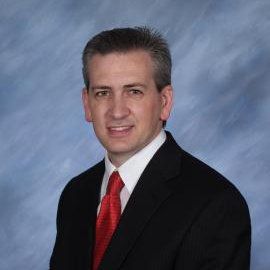Using The Application FMEA To Manage Product Usage Risk
Objectives
The Product Usage Risk Management Process fails any time a Product Design Specification (i.e. dimension, material property and/or software code) is released to manufacturing and/or Product Usage Instructions are released for customer use that results in a product failing due to the way it is used. When this happens both the company who designed the product and the end customer are exposed to risk.
Although no failures due to usage is the goal, the Product Design Specifications and Product Usage Instructions must be optimized to define a product that does not exceed a failure rate that is acceptable to the customer and the company who designed the product. Also referred to as an “Usage Risk Assessment” or “URA®“, the Application FMEA provides a systematic method for accomplishing this task. Using a product of the classes choice, attendees will learn how to use the Application FMEA to “risk optimize” the Product Design Specifications and Usage Instructions.
The key role that the Application FMEA plays in meeting the risk-based thinking requirements of ISO 9001:2015 and IATF 16949 will be explained.
Using a product of the classes choice, attendees will learn how to use the Application FMEA to “risk optimize” the Product Design Specifications and Product Usage Instructions.
If material is presented using a multi-day Workshop, the goal is to provide an Application FMEA of “Customer Delivery Quality” as well as educate attendees on the fundamentals of their use and creation.
Who Should Attend
All personnel who are responsible for the creation and maintenance of product designs and Product Usage Instructions should attend the class.
Prerequisites
Students must have knowledge of the product design and use of the product that they choose to use for the class exercises. If they exist, the Design FMEA and Product Usage Instructions for the product that the Application FMEA will be developed for should be brought to the session.
Duration
Class (One Day); Workshop (Two to three Days depending on product complexity).
Overview
-
What is an Application FMEA
-
Why perform an Application FMEA
-
When to perform an Application FMEA
-
Who should participate in the Application FMEA process
-
How to conduct an Application FMEA:
- How to create a Process Path for the Application FMEA;
- Two types of Application FMEA Failure Modes;
- Defining Failure Mode Effects;
- How to determine Severity (SEV) ratings in two minutes or less;
- Creation of the Application Specification Analysis;
- Nine sources of application failure;
- How to determine Occurrence (OCC) ratings in 15 seconds or less;
- The difference between prevention and detection controls;
- How to calculate the Risk Priority Number (RPN) and why it should be rarely used to determine what to work on;
- How to determine Class designations in the Application FMEA and their importance in determining what must be worked on.
-
How to Construct an Application Control Plan.
"Harpco Systems provides some of the most technologically advanced FMEA software tools on the market, buts its their disciplined technique that further separates them from all the rest. Harpco breaks down the barriers and corrects the pitfalls so companies can reap the full benefits of FMEA. Class room training not only properly teaches FMEA, but participants actually build their business's FMEA as they go and are often blown away by how much work got accomplished. Harpco Systems has become known as the Modern FMEA for a reason. Its structured, simplified and sustainable. Thanks Richard for opening our eyes and the FMEA Flip is awesome!"
I have been working with Harpco Systems for 20 yrs and have seen how their products and services continue to improve to meet customer demands. Harpco’s training is first rate and helps develop new ways of thinking about the importance of creating proper specifications early. Separately, I’ve seen firsthand the effectiveness of using their approach in problem solving, helping to advance problems that had reached a stall using traditional methods.
Rich was asked to help us put together a Design Control and Risk Management program for our Immunodiagnostics products. Rich worked with us to build the necessary infrastructure to make the system comprehensive for the level of complexity needed to handle our products. During this time, Rich was not only helpful in putting the system in place, but also educating us on the thought process to evaluate product design and process control. In doing so, Rich provided us with the fundamental concepts to be able to decompose any product or process problem to arrive at an effective solution. He has left a lasting impression on our organization.
We were very fortunate to work with Rich Harpster and his team as we improved our DFMEA process at Calsonic. There is no better teacher, coach, implementer than Rich when it comes to creating a knowledge base for engineers to use in creating part specs to assure that products meet the customer's requirements.
"I would like to thank Harpco Systems for the help, advice and frankly the education in how to design, develop, source and manufacture new to world products. Not only was the Harpco Systems process scrupulously meticulous in making us evaluate, question, define and then justify every single aspect of our product design, project risks and manufacture process, it was done at a pace that saved us months by not following our conventional processes. By cutting out all the waste and focusing our resources on what was truly important Harpco Systems enabled us to get to a state of production readiness months ahead of our projected schedule. This combined with the incredibly detailed, well documented and most importantly correctly linked/associated technical and risk file information prepared us with a watertight project file with no liabilities missed. Harpco Systems has changed the way myself and others approach product design and development for the better."





